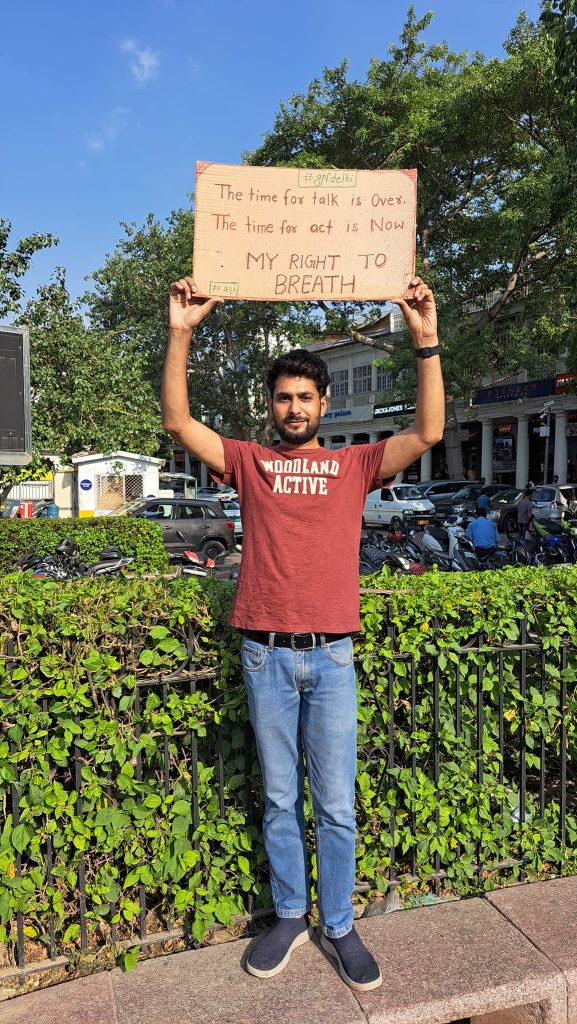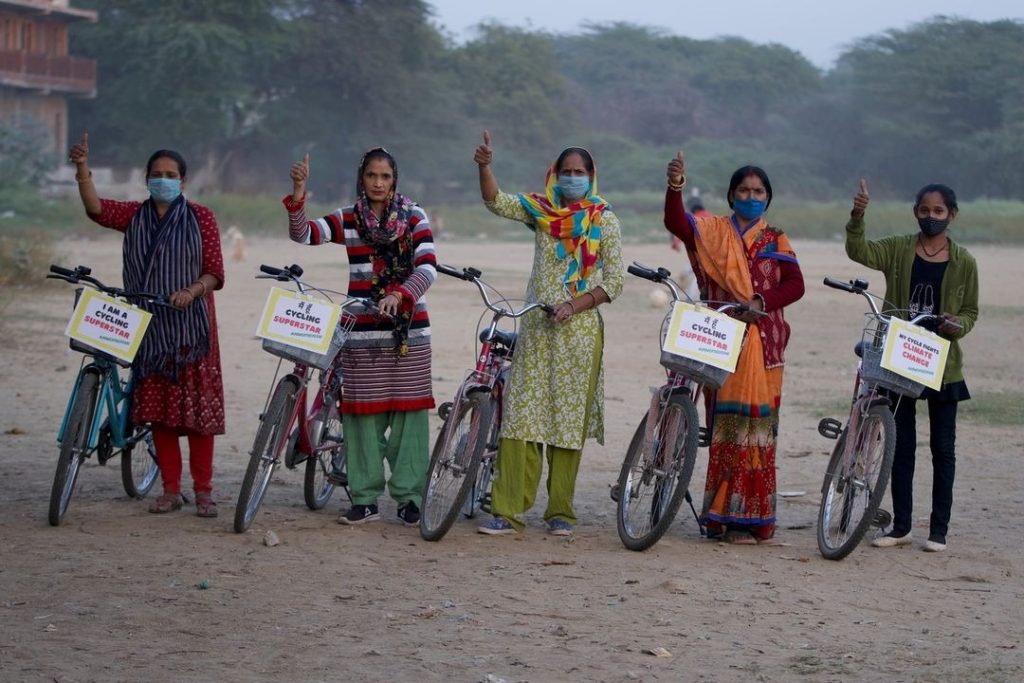(March 6, 2024) After passing out of engineering college in 2018, Sandy Khanda could have either followed the conventional path of securing a job or pursue a startup venture, a common choice among many young enthusiasts, but he chose to start an NGO. Headquartered in Delhi NCR, his NGO, Green Pencil Foundation has quickly gained momentum, extending its reach in eleven states of India with a strong volunteer base of over 2,000 young volunteers. Together, Sandy and his team have touched the lives of over 20,000 individuals through initiatives that emphasise women’s empowerment, menstrual hygiene management, education for underprivileged children, and action for climate change.
Recognizing the global nature of many societal challenges, Sandy has also expanded Green Pencil’s operations to Indonesia and Iran. “In Indonesia, our outreach extends to various areas in Jakarta and the Papua province, which has the lowest literacy rates in the country,” he tells Global Indian. “With a presence in over 50 schools and underprivileged communities, we are committed to making a difference in remote locations, employing an inclusive approach that transcends borders and religions. Our initiatives also extend to certain regions in Iran” the social entrepreneur adds.

Sandy Khanda
Life’s transformative turns
Sandy was born and raised in a small village in Haryana, and witnessed firsthand the disparities and challenges faced by rural communities. When he moved to Delhi for education, his transition to urban life only heightened his awareness of societal issues such as gender inequality, poor climatic conditions, air pollution, struggles of marginalised populations and plight of kids growing up in slums of Delhi NCR.
Fuelled by a desire to instigate change, Sandy began his journey through grassroots activism, utilizing platforms like writing, teaching slum children, and organising protests to address pressing social issues, while pursuing engineering.
However, his commitment to societal betterment became even stronger following a life-altering experience – a near-fatal accident that left him in a six-month coma. Emerging from this ordeal with renewed purpose and gratitude, Sandy resolved to dedicate his life to serving others. Thus, the Green Pencil Foundation was born, with a mission to empower communities, break down barriers, and drive positive change across India and beyond.
Green for environmental advocacy, Pencil for education
The name of the foundation, Green Pencil, reflects its dual focus on environmental advocacy and education. ‘Green’ stands for addressing the pressing climate change crisis. The foundation advocates improved public policies for reducing carbon footprints, with an emphasis on a human-centric approach.
‘Pencil’ centres around education, particularly the foundation’s efforts to uplift underprivileged children and women. Through educational workshops covering topics such as menstrual hygiene management, mental health, and academic classes, the Green Pencil Foundation empowers individuals for a brighter future. “The primary sources of funding for our initiatives come from individual supporters and corporate social responsibility, enabling us to sustain and grow our efforts in making a meaningful difference,” Sandy says.
Developing a global perspective
Apart from being engaged in his NGO, Sandy has remotely served as the national coordinator and community outreach manager at Atlas, a Brussels based political movement uniting people worldwide to create a freer, better and more equitable planet.
Sandy’s responsibilities encompassed coordinating community engagement to promote Atlas’ endeavours across India. “I was actively engaged in designing and executing comprehensive campaigns to advance Atlas’ principles within the Indian context. This entailed strategic planning, seamless coordination, and effective communication to amplify the organisation’s movements.” His involvement with Atlas provided him with a global perspective on societal issues, a perspective that has influenced the expansion of Green Foundation initiatives beyond India.
View this post on Instagram
Green Pencil’s meaningful projects
The youth-led NGO’s impact spans across major metropolitan cities of India including Delhi, Mumbai, Pune, Hyderabad, Chennai, Manipur, Chandigarh, Panchkula, Amritsar, Jaipur, Kolkata, and Bangalore.
The foundation is spearheading several meaningful projects. Through the ‘Periods of Pride’ initiative, it has conducted a thorough survey in government schools across India, uncovering critical challenges in menstrual hygiene management. The findings reveal prevalent issues including menstrual taboos, inadequate educational awareness, and limited knowledge about menstrual hygiene products, garnering wide attention.
Another project like ‘Slum to School’ aims to educate and enable soft skills development in slum kids to make them independent. “This project is running in more than 25 Indian cities in 11 Indian states to benefit over 3,000 slum kids,” shares Sandy.
The Foundation is working in coordination with Greenpeace India, the Indian branch of the global environmental group Greenpeace, a non-profit NGO, with a presence in 55 countries in a project called ‘Power the Pedal’. “This groundbreaking project focuses on providing bicycle training to hundreds of women, aiming to promote sustainable mobility and empower themselves in the process,” tells Sandy.


Green Pencil Foundation and Greenpeace India’s ‘Power to Pedal’ project provides bicycle training to women
Green Pencil’s Initiative, ‘One Home One Tree’ is aimed to influence people and encourage plantation drives to fight air pollution in metro cities.
The project, ‘Festivals vibes with needy tribes’ encourages people to celebrate festivals with needy people around them so that they feel special. “It gives the message of equality in the society,” the social entrepreneur remarks.
The project, ‘Pollution Se Azaadi’ advocates for a shift towards public transport and active mobility as effective means to reduce carbon footprints.
ALSO READ | Empowering change: Activist Sanya Sharma’s pursuit of a better world
Working to expand reach beyond India
Having tasted reasonable success in his efforts to make a difference in India, Sandy Khanda now aspires to extend his impact beyond borders by expanding Green Pencil Foundation’s programmes to various regions of South Asia. “We are working towards expanding Green Pencil Foundation’s footprint in South Asian and African regions with an aim to impact more lives,” he signs off.
- Follow Sandy Khanda on LinkedIn, Facebook, Twiter and Instagram
- Follow Green Pencil Foundation on Instagram, YouTube, LinkedIn, Twitter and Facebook




